The golden rule in recovering stolen assets

In 1972, when Bob Woodward was investigating the Watergate scandal, he was not getting any leads. He got a breakthrough from a secret informant with the pseudonym "Deep Throat," saying "Follow the money." In 2005, the identity of "Deep Throat" was revealed—it was Mark Felt, an FBI special agent. Mark passed away in 2008, but his advice to Bob Woodward became a golden rule in uncovering major crimes involving huge amounts of money.
Mark Felt's rule is still relevant to the question of laundered money from Bangladesh and its recovery. In this respect, "time is of the essence"—because the more time passes, the more difficult it becomes to "follow the money." Any laundered money travels very fast, particularly in this digital age. It moves to various destinations and takes different forms—both tangible and intangible. So, after a while, the colour of the money gradually fades, and it simply becomes very difficult to track and identify laundered money.
One critical question is: how big is the amount of money laundered from Bangladesh? Estimates vary. However, the White Paper on the state of the Bangladesh economy indicates that Tk 28 lakh crore was laundered between 2009 and 2023—equivalent to $234 billion. This is just an indicative figure, based on various sources and assumptions. The ultimate point is that the sheer scale of laundered money from Bangladesh is simply huge. After it left the country, the money was used to buy homes or other tangible assets in Dubai, UAE, UK, Malaysia, and so on.
The million-dollar question is: how can Bangladesh recover the laundered money that has crossed its borders? Let us make it clear at the very outset that the recovery process is both complex and time-consuming. The complexity arises on both financial and legal fronts. The process often starts with identifying unusual and suspicious transactions, which can be done through anti-money laundering protocols. Authorities trace the funds through financial records, such as bank accounts, wire transfers, and export-import invoices, which requires forensic financial investigation to uncover how money was laundered. The detection and investigation of laundered money require both bilateral and international cooperation. For example, governments use Mutual Legal Assistance Treaties to request assistance from foreign governments in gathering evidence, freezing accounts, or tracing assets. With cooperation from foreign countries, the laundered money can be temporarily frozen to prevent further movement. International anti-crime organisations like Interpol can be involved in the investigation. International investigation firms are sometimes engaged in evidence gathering and investigations.
Next comes the legal action. Legal action is initiated against those involved in money laundering, both in the country of origin and the country of destination. The legal action involves charges of money laundering, fraud, or other related crimes. Along with criminal charges, civil lawsuits may also be initiated. But two issues are critical in this respect. First, three basic points need to be established: one, in the country of origin, wealth was accumulated illicitly; two, wealth was taken out of the country illegally; and three, the wealth entered the country of destination illegally. Second, before initiating legal actions abroad, those involved in money laundering must be convicted in the courts of the country of origin. Sometimes, international law firms are appointed for legal actions abroad. If the laundered money is found to be illegal, confiscation orders are served by courts to seize the funds in the destination country. The confiscated laundered money is then returned to the originating country through legal agreements and treaties.
The process of convicting those involved in money laundering and recovering the laundered money critically hinges on collaboration between the country of origin and the country of destination. In that context, the existence of mutual treaties and agreements between those countries is a prerequisite. There must be compatible legal frameworks between the two parties. Different legal frameworks, weak enforcement of anti-money laundering protocols, and strict banking secrecy laws in the destination country may make the recovery process difficult. Furthermore, the goodwill of the destination country is also key. For example, the destination country may only be interested in whether the money has entered its borders legally, irrespective of where and how it was accumulated and how it left the originating country. This reflects that the destination country might be more interested in incoming resources. This may impede the recovery process.
Additionally, if the funds were settled in tax havens or offshore banking, the recovery process becomes more complex. Similarly, complexities may arise if the laundered money is turned into tangible assets such as houses. It has been found on many occasions that legal firms engaged by money-laundering victim countries to detect, trace, and recover laundered money have been bribed or paid large sums by those engaged in money laundering.
Questions are often asked if laundered money from different countries have ever been recovered. Two observations should be put forward before answering this question. One, there are positive examples where certain countries were able to recover laundered money. But there are also negative examples. Second, till now, no country has been able to recover the full amount of laundered money, so the success story is only partial.
Angola is often cited as a positive example, where $5 billion was recovered through various means. It represents part of the billions of dollars laundered by the son of a past president of the country, Jose Eduardo dos Santos. In fact, about $3 billion of the $5 billion was willingly returned by a friend of the president's son. In Nigeria, during the rule of Sani Abacha, an estimated $5 billion was looted and laundered abroad. After extensive legal proceedings and cooperation between Swiss authorities, the World Bank, and the Nigerian government, $500 million was recovered in 2004. In 2020, a further $300 million was agreed to be repatriated from the US. Other recoveries were made in various countries, including the UK and Liechtenstein, bringing the total recovered to $1.3 billion. In Malaysia, 1Malaysia Development Berhad was involved in laundering $4.5 billion through complex schemes. In 2020, the US Department of Justice reached a settlement with Goldman Sachs, which agreed to pay $2.5 billion directly to Malaysia for its role in the scandal. US authorities also recovered over $1 billion in assets tied to 1Malaysia Development Berhad.
Money laundering is a sensitive issue. Recovery is neither costless nor easy. It will take time.People should surely be informed about the progress as well as the problems of the recovery process, but they should not be given any false notions about the timing or the extent of the recovery. Whatever success Bangladesh has in recovering the laundered money, the issue needs to be pursued, irrespective of time and cost, because it has a moral dimension. When the culprits are brought to justice, it will send a strong signal to everyone that nobody can get away with looting national wealth.
Selim Jahan is former director of the Human Development Report Office under the United Nations Development Programme (UNDP) and lead author of the Human Development Report.
Views expressed in this article are the author's own.
Follow The Daily Star Opinion on Facebook for the latest opinions, commentaries and analyses by experts and professionals. To contribute your article or letter to The Daily Star Opinion, see our guidelines for submission.
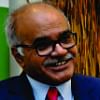
 For all latest news, follow The Daily Star's Google News channel.
For all latest news, follow The Daily Star's Google News channel. 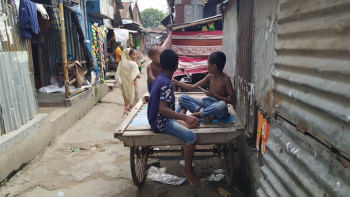




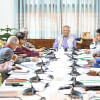
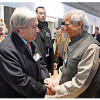

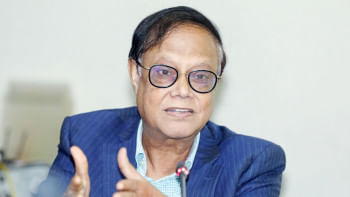
Comments